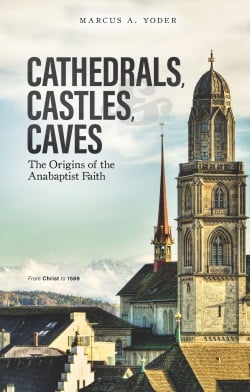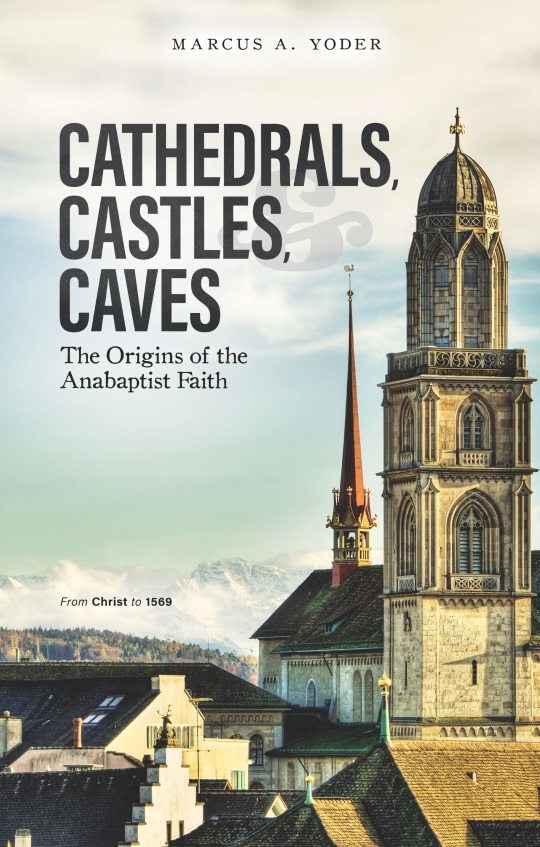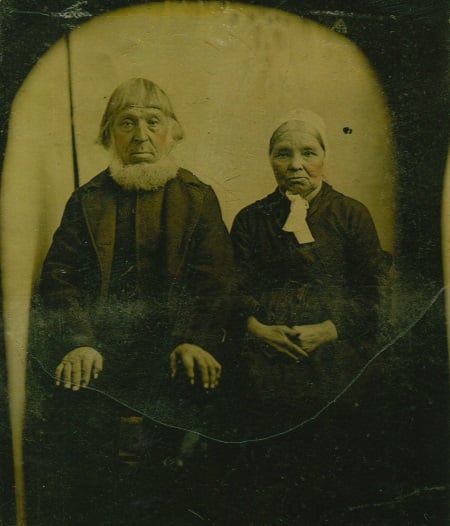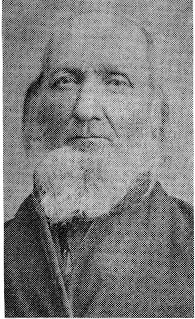Marcus A. Yoder on Cathedrals, Castles, and Caves: The Origins of the Anabaptist Faith (Book Giveaway)
Cathedrals, Castles, and Caves: The Origins of the Anabaptist Faith is the new book by Marcus A. Yoder. Marcus serves as Executive Director of the Amish & Mennonite Heritage Center and the Ohio Amish Library.
Marcus and I touched base last December when I dropped by the Center (this is where I took the photos of Amish women’s head coverings and Amish church clothing – it’s a great place to visit to learn more on Amish history and culture).
 Cathedrals, Castles, and Caves examines history from the time of Jesus Christ through the beginnings of the Anabaptist movement. I asked Marcus some questions about his book and Christian and Anabaptist history. I hope you enjoy this Q-and-A and Marcus’ insights. And thanks to Marcus for taking the time to share with us.
Cathedrals, Castles, and Caves examines history from the time of Jesus Christ through the beginnings of the Anabaptist movement. I asked Marcus some questions about his book and Christian and Anabaptist history. I hope you enjoy this Q-and-A and Marcus’ insights. And thanks to Marcus for taking the time to share with us.
Win a copy of Cathedrals, Castles, and Caves
To enter to win, just leave a comment on this post.
I’ll draw a winner at random next week, and post it here (by the way, if you missed the winner of our last book giveaway, I’ve updated that post with the winner at bottom).
Marcus A. Yoder on Cathedrals, Castles, and Caves
Amish America: Who should read Cathedrals, Castles and Caves? What does it cover?
Marcus A. Yoder: Cathedrals, Castles and Caves is written for a general audience. I wrote it for people who enjoy history but are not necessarily historians. It is meant for the common reader to enjoy. At the same time, since it is specially focused, it does appeal to study groups, classes and small groups that are interested in the world that led to the development of the Anabaptists.
It covers a wide scope of history from the time of Christ through the early Anabaptist beginnings. The focus is to set the context of the beginning part of the movement into the world in which it developed. Like all movements, these people did not wake up one morning and decide to begin a movement. It comes out of the world in which it lived. One of the most-commented ideas from the readers so far, has been that they did not understand the deep piety of the late medieval world, which is instrumental to understand if one wishes to understand the Anabaptist beginnings.
Amish America: What is one surprising or unexpected thing most people don’t know about Anabaptist history?
Marcus A. Yoder: As I have heard back from my readers, I have discovered that many did not know, or understand, the way that the excesses of the movement shaped the movement. I am especially thinking of the debacle at Munster and the impact that it had on the rest of Europe in relation to how they thought about Anabaptists. And also, how it changed the movement itself. More than anything in the first 10-20 years this element shaped what the movement would become.
 It becomes apparent that many modern-day Anabaptists have never heard, or perhaps do not wish to hear, this piece of history. One of the early readers sent me a note suggesting that in future printings we remove this section so that our history is more palatable! I suggested in return, that history was never meant to be palatable, rather it is meant to reveal. And Munster does reveal something about our movement.
It becomes apparent that many modern-day Anabaptists have never heard, or perhaps do not wish to hear, this piece of history. One of the early readers sent me a note suggesting that in future printings we remove this section so that our history is more palatable! I suggested in return, that history was never meant to be palatable, rather it is meant to reveal. And Munster does reveal something about our movement.
As a son of the movement—I am an Anabaptist—I often feel like we work hard to create an image that history is built around the heroic and good, and there is much of that; however, there is also the other side of it. If we wish to write history in the model of the Bible, we must cover the bad with the good!
And what is one surprising or unexpected thing most people don’t know about the history of Christianity in general?
I am surprised how few people understand the late medieval era and the events that led up the Reformation. There is a deep piety that is reflected in how people lived and the questions they had, that would eventually lead to many changes. We tend to view these periods as “dark ages” or less enlightened periods of time. Humans the world over, and throughout all of time, have the same questions about relationships with God or their deity. Those questions do not change, and since religion was so deeply integrated into common life, it shaped the era.
Modern audiences tend to think that true human history began with the Enlightenment. Even the term “Enlightenment” begs us to think in this way. That is simply not true. The Reformation and then the Enlightenment are built on the back of the history prior to that. Unlike a book, history is much harder to capture in chapters, or eras. Historians do this to create ways that help us understand and think about history, but they are artificial impositions on the past.
What aspects of the early church do we see reflected in the practice of Amish and other Anabaptist groups today?
There are several key ideas that the Anabaptist world, including the Amish, have embraced from the early church. The first of these is the idea of church unbound to any political entity. The early church thrived in an era where they could have embraced a political system, but did not. This allowed their message to be world-impacting rather than bound to a political and geographical entity.
The second, but related idea, that they embraced, is nonresistance. Without a doubt the early church believed that the use of the sword and coercion was outside the kingdom of Jesus. This has become one of the central ideals of the Anabaptist world. We believe that testimony, not persuasion, is what will ultimately change our broken world.
Who are the most significant figures of early Christianity which the average reader might not be aware of (and why)?
My immediate answer is not a person, but the nature of the movement. This was a multicultural, multinational church that crossed all social, political and geographical boundaries in their ideal of reaching the world for the Kingdom of Jesus.
If I had to choose a person it would be Constantine, the Roman Emperor, who legalized Christianity. It is hard to imagine the change he wrought with his edict. In looking back we often view events and people like this through modern eyes, which makes them difficult to measure.
I think this era is often minimized because there are not strong key figures, rather a series of leaders and events that shaped the church. Another reason is that many of the texts written about this era are difficult to read. Scholarly texts are important, but often limit common readers from the information. We need books that make it possible for people like myself to read.
What were Flugschriften and why were they important?
Flugschriften are a result of the invention of the moveable type printing press in the 1430s. They are short, easy to produce, pamphlet-like printings that conveyed ideas or bits of news. Most were what we would term as propaganda today.
The literal translation of flugschriften is “flying words.” In the period between 1520 and 1530 when the Reformation was in full force in northern Europe about 10,000 unique flugschriften were produced. Historians estimate that by 1530, about 100 years after the invention of the moveable type press, there were about six million of these in circulation in Europe! Most in this period were in the common language of the people and designed to be read aloud and spread their ideas throughout the masses. They created a world where new ideas began to shape the European world.
The Anabaptist movement capitalized on the printing press. They produced their own works, often short and polemical.

Who were the most significant figures in the Anabaptist movement, and why?
There are several figures that are instrumental in the early part of the movement. In Zurich it was Felix Manz, Conrad Grebel, George Blaurock and Michael Sattler. We know a fair bit about these people. In the north it was the furrier, Mechoir Hoffman and bit later Menno Simons. These are the “famous people” of the movement. However, we miss something very important if we only focus on these people. The movement is built, as most such movements are, on the common people who embraced the ideas that these people taught.
Because of the unique idea of the movement, it could go along without these strong figures after they died. In fact, the authorities often focused their efforts on imprisoning the key leaders and it is estimated that the average lifespan of an Anabaptist leader after being recognized as a leader was about two years! So the idea that the movement flourished reveals that it was not the movement of a few key people, rather, it was a movement built on the common people.
What was life like for the first generations of Anabaptist people?
Life in Europe in this era was difficult to say the least. The plague swept through northern Europe in periodic waves from 1348 to the 1800s, killing vast parts of the population. In fact, the life expectancy of this time period for both men and women is between 30-34 years of age. This is due not only to a high rate of infant deaths and the ravages of disease, but also the nearly constant warfare raging in this time. There are hardly any families that did not know the constant fear that this would produce.
Another factor is the strong social order of the day. One remained within the order one was born into. If born a peasant, you had no choice to move beyond that. This social structure governed what one ate, how one dressed, and whom you could interact with. Peasants were merely property for the nobility who often forced them to fight their wars, provide their food, and serve them hand and foot.
Nine of ten Europeans lived in small villages or hamlets that had very little privacy and sanitation. These were often the ancestral homes of these families for generations, and were where people expected to live, work and die. This is a small, localized world in which Anabaptism spread.
What was the Schleitheim Confession of Faith, and why was it significant?
The Schleitheim Confession of Faith was the first formal confession of faith and belief written by the fledgling Anabaptist groups. The movement began in 1525, and the confession was written in 1527. This is important since it gives perspective about what these people believed and why they were so harshly persecuted.
The Schleitheim is not comprehensive in that it does not cover a wide scope of theology. Rather it focuses on seven ideas, or articles that are unique to this group of people. These seven are the key binding factors of the group. They are what makes them unique. I discuss each of the seven in the book. So read the book for more!
Michael Sattler was the scribe and most likely the leader of the group of nearly sixty people who gathered to discuss what is was that identified them. What makes this confession different is that it is the work of the group, rather than an individual. This typifies the Anabaptist ideal of community and the formulation of standards.
Amish people seem to have a strong interest in history. You can see this in the interest in books of descendants, and the prevalence of historical tomes like Martyrs’ Mirror. Why is it important for Anabaptist people to know their history?
Like all people and societies, and especially a subculture within a broader culture, the Amish are always at risk of amalgamation; or on the other hand, an insular isolationism. In both extremes they will lose their difference quickly. Knowing history is a powerful tool in preventing a group from falling into either ditch.
One of the major Anabaptist historians of the 20th Century, Harold Bender, said that the study of Anabaptist History was not merely for the joy of learning or for advancing disciplinary discussions; rather, such a study served the larger purpose of shaping church life in the present. It is imperative for any group that its history is an integral and shaping part of its present world.
What will be covered in the follow-up book (or books)?
I intend to continue to write about the history of these people. In addition, I am working on a narrative style history of immigration and early Amish in America. Working with JPV Press has allowed me the space and insight to continue to develop the story. I am especially appreciative of Sue Wengerd for her immense patience and wisdom in guiding that process.
You can get a copy of Cathedrals, Castles and Caves: The Origins of the Anabaptist Faith from JPV Press.









A Catholic looks at other churches
The Anabaptists have survived and prospered for centuries. What motivated this stubborn, courageous faith?
Nice title!
Man, I wish this book had been available ten years ago when I wrote a paper on the history of Anabaptism for a university class I took!
This was a very interesting post. Your questions were very good, Erik, (signs of a good journalist), and Marcus Yoder’s answers were very thorough and informative. I bought a copy when I was at Menno-Hof in Shipshewana, Ind., in April so don’t need to be in the drawing. (As I was leaving Shipshewana April 30, I saw a sign at E & S Bulk Foods that Marcus Yoder was going to have a book signing there in May, so hope it went well!).
I have served as a volunteer host at Menno-Hof for a month each spring the past four years. One of the most interesting occurrences at Menno-Hof is the number of international visitors
who come to Menno-Hof. This April there were visitors from over 25 different countries (as well as many U. S. states and Canadian provinces). Many of these international visitors (as well as others) have never learned of Anabaptist history before, and express interest in learning more when they return to their homes. I have several books that I suggest they might be interested in reading, and now will add Yoder’s book Cathedrals, Castles and Caves to my suggestions for them. It is a very understandable book and I am glad to know that he intends to keep writing.
AL in Ky
What is Menno-Hoff?
Menno-Hof is an Amish-Mennonite information center in Shipshewana, Indiana. Through multi-image presentations, historical environments and many displays it teaches visitors about the history, faith and life of Amish and Mennonites, including much information about Anabaptist history. It presents the same story (in a different manner) as the Amish & Mennonite Heritage Center in Berlin, Ohio, where Marcus Yoder is executive director.
Marcus A Yoder on Cathedrals, Castles, and Caves
Hi Erik+Marcus, I must say, quite an intriguing title, questions, and answers. I hope to be able to get one someday to read myself. Blessings to you both, Carol
Very interesting
This was a great introduction and got me very interested in the book! I hope to be able to track it down to add to my collection of history of the Amish faith.
Origins of the Anabaptist's
The oft forgotten ISIS style beginnings of the Anabaptist movement trying to establish an earthly kingdom using force. The radical, Anabaptist, terrorists of the Muenster Rebellion. John Leydon the despot brings Anarchy, property confiscation, socialism, forced polygamy and be headings North West Germany. He and his lieutenants were executed in the town square and put in cages for display. They still hang on the towers of St Lambert’s church to this day.
Menno Simons quickly realized peaceful tactics would be better; although his brother was radicalized and killed in another Anabaptist terror event at a Dutch monastery.
Origins of the Anabaptist's
The cages still hang on the towers empty or are their skeletons in them?
Also would you please tell me what city St. Lambert’s church is in.
A Nice Surprize
Hearing about this book was a wonderful surprise. I was looking for the history of Anabaptist faith in Switzerland; how it started and the journey of the people to America.This looks like an excellent resource and I’d love to have a copy. Thank you.
History
It’s always fascinated me how religion has survived throughout the ages. The Q&A was very interesting.
Amazing!
I’m very interested in anything Amish. I have recently, in the last month or two, became friends with an Amish couple and some of the Amish men who work for them. They are amazing people. All that they have been through to get where they are today is heartbreaking and courageous, but I know these things help make us who we are…I would absolutely love to win this book, as I don’t have any to read about them. Great work guys! Keep up the good work!
Looks like an interesting read
I have been trying to trace my Family history – Elders gone now left little info and I wonder if my distant ancestor wasn’t shunned from his family at some point. I know one was a tailor who made clothes for the Amish and Dunkards. During my search I’ve run across many Saylor/Seiler/Sayler/Sailor people who have all been very involved in religion. The Amish, Mennonite and Church of the Brethren even Schwenkfelder’s – Lancaster PA being the last known family location. They haven’t connected me to my ancestors but the exercise has proven quite educational and fascinating. Always interested in learning more so please count me in on the drawing for this book and thank you for your articles. You provide great information!
To J. Sailor
you might want to do a geneology check through ancestry.com
also a good read is “Amish Grace” by Donald B. Kraybill, Steven M. Nolt and
David Weaver. I have an Amish back ground my self. I left at the age of 18
Anabaptist
This is so timely as I am working on trip to Central Europe to follow the path of my Anabaptist ancestors! Will have to consider this book! Our trip will take us thru the Swiss Mennonite families from Bern to Vohlynia, Russia ,specifically the Kaufman and Waldner(Hutterite) surnames. Am actively seeking sites to visit, and wondering if this book would help? Thank you !